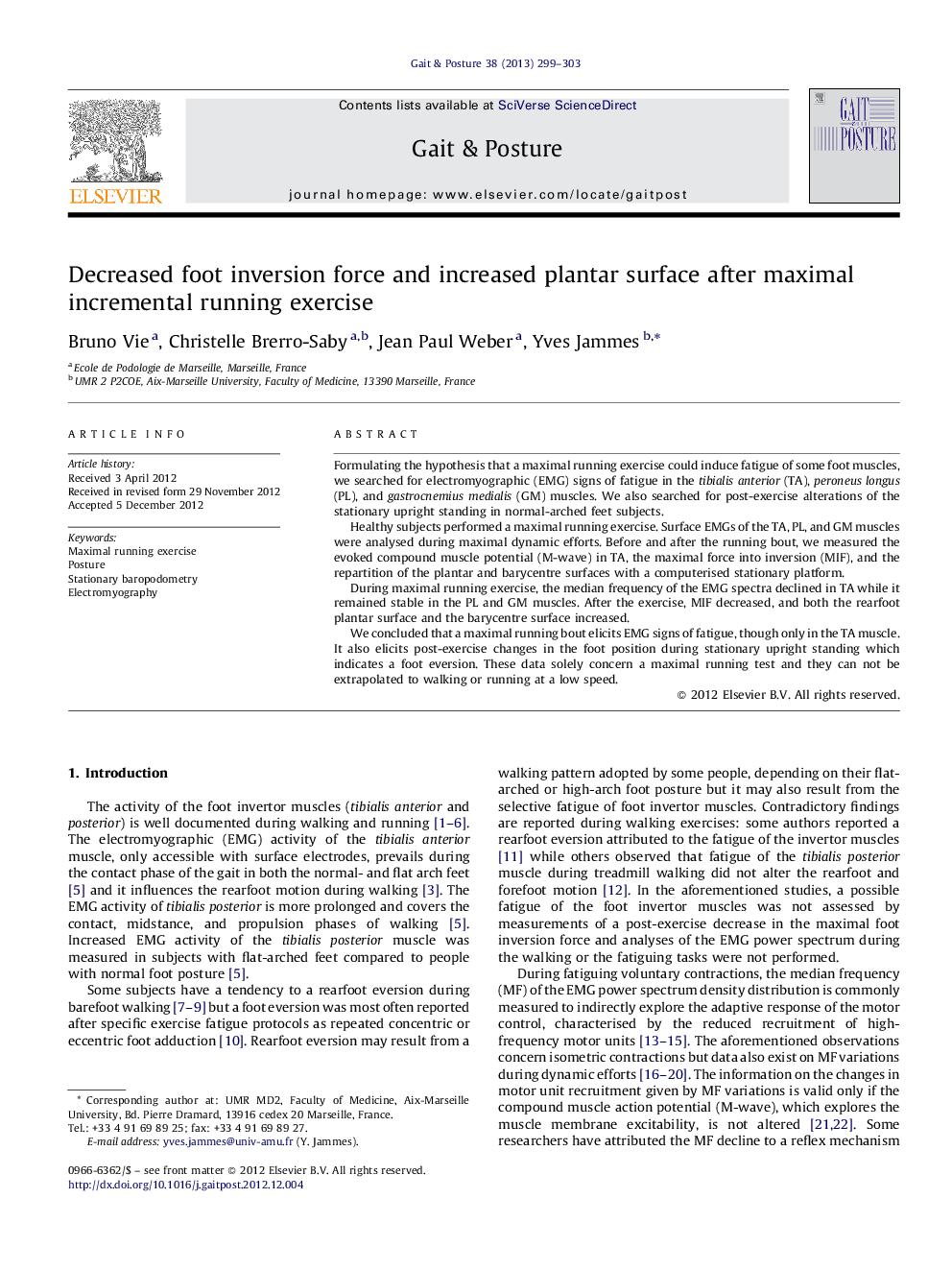| Article ID | Journal | Published Year | Pages | File Type |
|---|---|---|---|---|
| 6207361 | Gait & Posture | 2013 | 5 Pages |
Formulating the hypothesis that a maximal running exercise could induce fatigue of some foot muscles, we searched for electromyographic (EMG) signs of fatigue in the tibialis anterior (TA), peroneus longus (PL), and gastrocnemius medialis (GM) muscles. We also searched for post-exercise alterations of the stationary upright standing in normal-arched feet subjects.Healthy subjects performed a maximal running exercise. Surface EMGs of the TA, PL, and GM muscles were analysed during maximal dynamic efforts. Before and after the running bout, we measured the evoked compound muscle potential (M-wave) in TA, the maximal force into inversion (MIF), and the repartition of the plantar and barycentre surfaces with a computerised stationary platform.During maximal running exercise, the median frequency of the EMG spectra declined in TA while it remained stable in the PL and GM muscles. After the exercise, MIF decreased, and both the rearfoot plantar surface and the barycentre surface increased.We concluded that a maximal running bout elicits EMG signs of fatigue, though only in the TA muscle. It also elicits post-exercise changes in the foot position during stationary upright standing which indicates a foot eversion. These data solely concern a maximal running test and they can not be extrapolated to walking or running at a low speed.
⺠We hypothesised that maximal running could induce fatigue of some foot muscles. ⺠Surface electromyograms (EMG) of three foot muscles were recorded during running. ⺠We measured maximal foot inversion force and repartition of the plantar surfaces. ⺠EMG signs of fatigue were measured in a foot invertor muscle (tibialis anterior) ⺠Running elicited post-exercise foot eversion during stationary upright standing.
